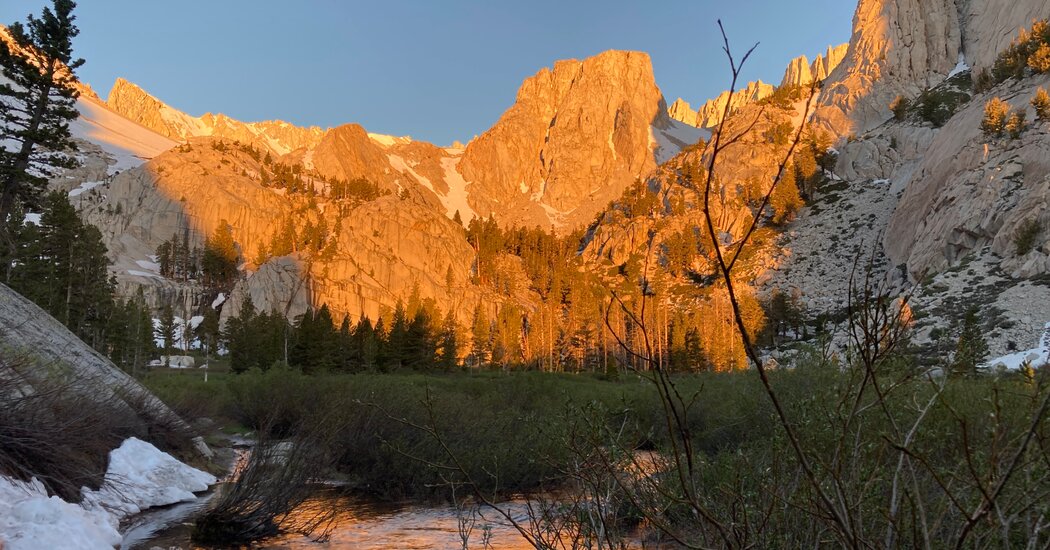
A brutish granite ridge soared above us in the moonlight. The snow that should not have been there in July seemed to go on forever. We were already short of breath, and weirdly, there were almost no other hikers. Even though I had trained for this, I felt stupidly out of my depth.
We were only three miles into the 10.7-mile ascent of Mount Whitney, in California, the tallest peak in the contiguous United States.
A middle-aged Manhattanite, I had first taken to hiking during the pandemic, when my marriage came to an end, and on those rambles, I began to see there were pathways out of the pain and confusion. I had found a new love on the laurel-lined trails of New Jersey: my girlfriend, Lucy, who was now beside me on the Mount Whitney Trail and feeling similarly overwhelmed beneath the towering Sierra cliffs.
In 2022, I scaled Mount Marcy, the highest peak in New York State, with my son. That weekend, ecstatic, we looked for another adventure. Some Google searching revealed that Mount Whitney, the highest peak in the lower 48, was not out of reach for amateurs like us. I proclaimed that he and I, along with my daughter, would climb it in 2023. In the end, neither of them could make it. Lucy didn’t need much convincing to join me. Hiking had brought exhilarating new challenges and triumphs — and Mount Whitney promised those on a much greater scale.
But only a short way up, my lofty ambitions met snowy reality.
We’d been told to expect a lot of snow higher up, but we didn’t expect any this low. I had packed an ice ax and crampons, on the strong urging of the owners of a gear store in Lone Pine, the unpretentious town at the foot of the mountain where most people prepare for the climb, but I didn’t want to use them so early. It would take me forever — and we didn’t have forever. We had less than 24 hours.





